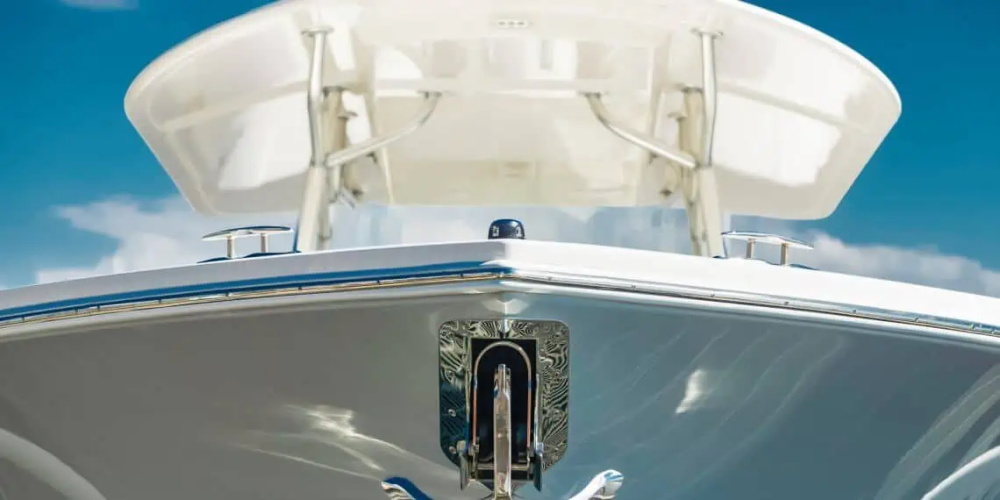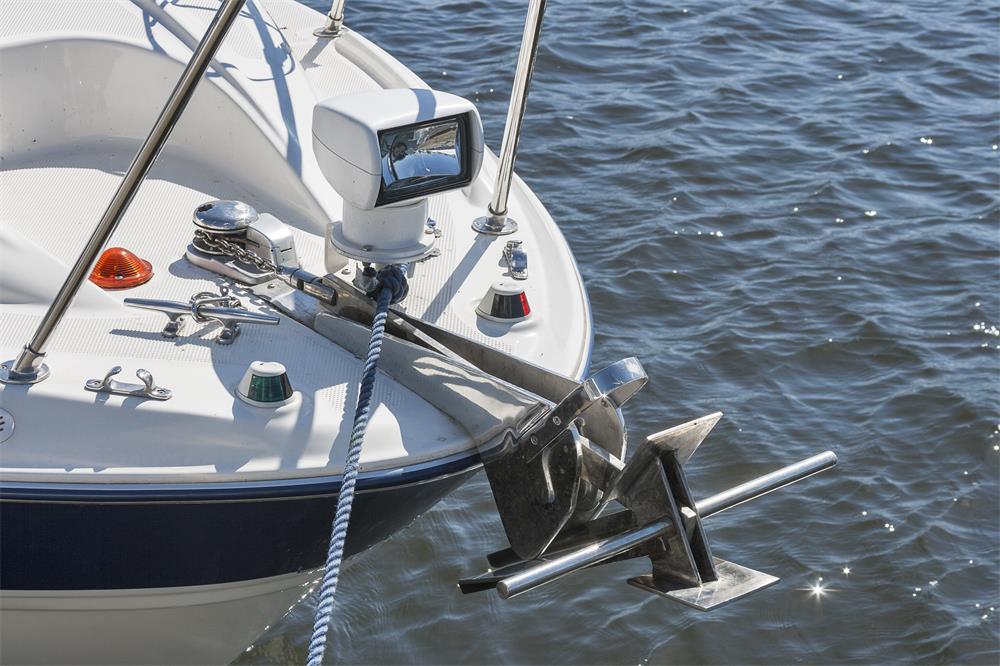- English
- Español
- Português
- русский
- Français
- 日本語
- Deutsch
- tiếng Việt
- Italiano
- Nederlands
- ภาษาไทย
- Polski
- 한국어
- Svenska
- magyar
- Malay
- বাংলা ভাষার
- Dansk
- Suomi
- हिन्दी
- Pilipino
- Türkçe
- Gaeilge
- العربية
- Indonesia
- Norsk
- تمل
- český
- ελληνικά
- український
- Javanese
- فارسی
- தமிழ்
- తెలుగు
- नेपाली
- Burmese
- български
- ລາວ
- Latine
- Қазақша
- Euskal
- Azərbaycan
- Slovenský jazyk
- Македонски
- Lietuvos
- Eesti Keel
- Română
- Slovenski
- मराठी
- Srpski језик
Anchor Bow Roller Selection Guide!
2023-11-29
Having a reliable anchor bow roller on your boat or yacht is essential. Not only does it protect and secure the anchor when being deployed or stowed away, but it also helps to keep everything neat. We’ll give you all the information you need to understand different types of anchor rollers, their uses, and all other aspects of picking the right one for your vessel.
What is an Anchor Bow Roller?
Anchor bow rollers are devices installed on the bows of boats providing a secure and safe way to deploy and retrieve anchors. With an anchor bow roller, you no longer have to manually lift the anchor off the deck, making it easier to bring up when you're ready to move on, plus ensuring nothing gets tangled in the line while retrieving it.
Why Are They Important?
Anchor bow rollers are essential for both safety and convenience. Installing one on the bow of your boat gives you a secure point from which to deploy and retrieve your anchor quickly without having to attach it manually each time.
This is especially helpful in windy or choppy waters. In addition, anchor bow rollers keep your lines away from potential snags and obstructions while retrieving them, offering greater security.
Finally, they also help protect your vessel by keeping the lines taut, reducing wear and tear due to constant movement and strain caused by wind or current changes.

Anatomy of an Anchor Roller
A bow roller consists of several components.
Base
The base of the bow roller attaches to the boat’s bow and is usually bolted or screwed in place.
Roller
Rollers can be single or multiple, depending on the type of bow roller, and guide the anchor chain and rode from the bow to the anchor locker.
Pin
The pin secures the anchor in place on the bow roller - it can be spring-loaded or require a separate locking mechanism. Some bow rollers also include a locking mechanism that prevents them from swinging during deployment and retrieval.
Mount
Finally, mounting hardware such as bolts or screws securely attaches the bow roller to the boat’s bow.
Types of Bow Rollers
There are several types of bow rollers available, each with its unique benefits and drawbacks:
Single Roller
This type of bow roller has a single roller to guide the anchor chain and rode. It is typically constructed of stainless steel, aluminum, or plastic. The single roller is the most basic type of bow roller suitable for small boats or lightweight anchors.
Benefits:
·Economical option
·Simple design
·Easy to install
Drawbacks:
·Not suitable for larger boats or heavier anchors
·Can cause the anchor to swing
Double Roller
A double roller bow roller is an excellent choice for larger boats or heavier anchors. With two rollers providing extra support, it ensures optimal security and stability of the anchor and chain.
Constructed out of durable materials such as stainless steel or aluminum, it greatly reduces the chances of swinging while keeping your boat in place.
Benefits:
·More suitable for larger boats and heavier anchors
·Reduces the chance of the anchor swinging
Drawbacks:
·More expensive than other types of bow rollers
Flat Bow Roller
Boats with a flat bow will find this bow roller extremely useful. Its flat plate is designed to guide the anchor chain and rode, while its construction from stainless steel, aluminum, or plastic gives it the durability needed for long-lasting use.
Benefits:
·Compatible with boats with a flat bow design
Drawbacks:
·May not be suitable for boats with a curved bow
Hinged Bow Roller
Boats that have limited deck space can benefit from the hinged bow roller. This device is constructed from stainless steel or aluminum for long-lasting support and durability.
It also has a foldable design, so it can be easily moved out of the way when not in use and save you extra space on your deck.
Benefits:
·Provides additional deck space
·Can be folded down when not in use
Drawbacks:
·May not be as sturdy as other types of bow rollers
Self-Launching Bow Roller
This type of bow roller is designed to automatically launch the anchor once it is released, making it easier for the operator. It is typically constructed of stainless steel or aluminum and uses a hinged design to let the anchor and rode move along the roller
Benefits:
·Automatically launches anchor once released
·Makes it easier for the operator to deploy the anchor
Drawbacks:
·More complex and may require more maintenance than other types of bow rollers

Factors to Consider When Shopping for a Bow Roller
Several essential elements must be considered when selecting a bow roller for your boat.
First, evaluate the size and weight of your anchor and chain to ensure the bow roller can handle the load.
Secondly, choose a bow roller suitable for your boat’s design and material to prevent damage.
Lastly, opt for one that is easy to install and maintain, with all necessary hardware included and accessible features such as removable rollers or a hinged design.
Troubleshooting Common Problems
Boat Bow Rollers can experience various problems. Here are some of the most common issues and how to troubleshoot them:
·Roller Sticking: This is usually caused by debris lodged between the roller and the mounting bracket. To resolve this, remove the debris and lubricate the roller with a silicone-based lubricant.
·Roller Wobbling: If the roller is wobbling, it may be due to loose mounting bracket bolts. To resolve this, tighten the bolts to ensure they are securely in place.
·Roller Damaged: If the roller is cracked, dented, or otherwise damaged, it may need to be replaced. Inspect the bow roller for any signs of damage and replace it if needed.
·Anchor Rode Getting Stuck: In some cases, an anchor rode may get stuck on a bow roller if it’s not the right size for that particular rode. Ensure that the roller is matched with an appropriate length of anchor rode to prevent this issue from occurring.
·Corrosion: Corrosion can occur over time on metal rollers and needs to be addressed quickly when noticed. Inspect your bow roller for any corrosion signs and replace corroded parts as required.
Sizing an Anchor to Fit a Bow Roller
To ensure your anchoring system is safe, efficient, and practical, it’s essential to size your anchor to fit the bow roller properly. Here are some factors to consider when doing so:
1.Choose an anchor that fits your bow roller’s dimensions and weight capacity. Make sure the shank length doesn’t interfere with any other equipment on the bow
2.Different types of designs and shapes (for example, a fluke style or delta anchor), may need a different setup for your boat.
3.It’s wise to consult with a professional if you have any questions or uncertainty about choosing or sizing an anchor or bow roller.
Conclusion
Investing in a high-quality anchor bow roller can save you money in the long run by preventing damage to other parts of your boat caused by improper storage or security of anchors.
Understanding the different types of bow rollers, their features and benefits, troubleshooting common problems, and correctly sizing an anchor for your bow roller will ensure your anchoring system’s performance and longevity.
With this guide, you should have a complete picture and can be prepared to decide what type of bow roller is best for you.




